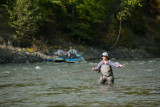Popular searches
Articles
Series
Topics
Shop
Recipes

He stared at me vacantly, his back hunched over and arms in an awkward fold. His bottom hand lingered uncertainly on the butt of his Spey rod.
“The what?!” He asked, squinting his eyes as though I had just requested he perform some sort of risqué musical striptease.
I laughed and repeated myself, “The dangle! Let your fly hit a true dangle…”
I stumbled over the rocks to reach close proximity to his ears and proceeded to explain what I was asking of him. Throwing his head back in a relieved smile, he proceeded to apply my instruction to his cast and increased his productivity tenfold.
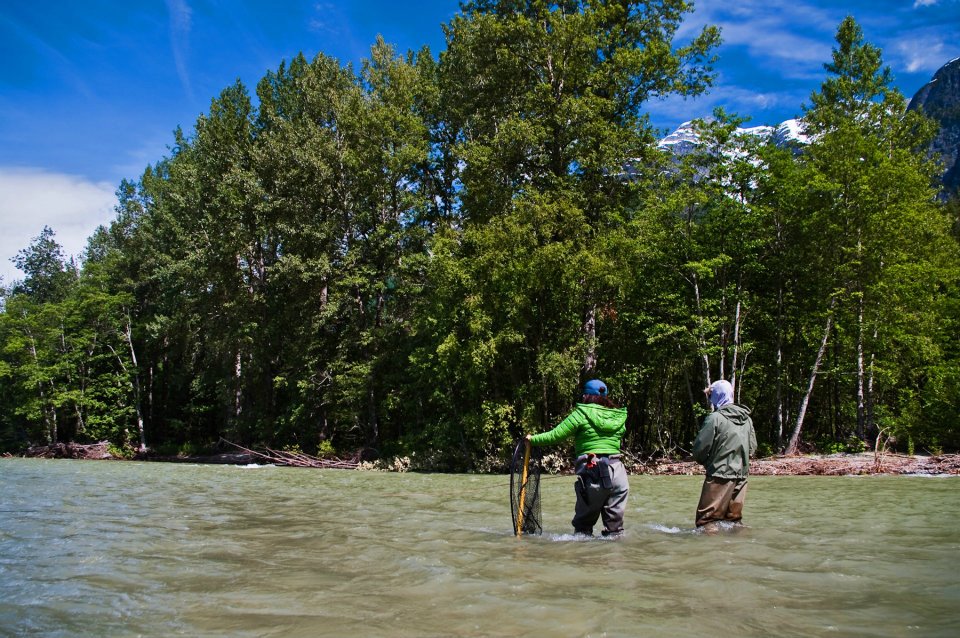
It is a regular occurrence for a full-time guide; a guest who isn’t up to date on the latest fishing lingo bears minor confusion as a nine hour day laced with steelhead terminology unfolds, reminding them that there’s always more to learn.
It can be intimidating to some, confusing to others, and just downright annoying to many people who are trying to get into the steelhead game. So with this awareness, I have drawn up some simple definitions for basic terms that you may run into during your next venture to the river.
Anchor: The portion of fly line, sink tip, or leader that is touching the water during the sweep and backstroke in Spey casting. The anchor provides “stick” caused by water tension so that the line will not jump out of the water during the D-Loop. If the anchor is “blown” the line and fly will leave the water causing a failed cast.

Bloody L: A common Spey casting error in which the D-Loop fails to align the anchor parallel to the forward cast; the name derives from the typical layout of the line in an “L” shape on the water when this occurs. The result is a forward cast that lacks energy to roll over properly. This is typically caused by setting the anchor in an improper position prior to the sweep, or an incomplete or shortened sweep which fails to carry enough energy into the D-Loop.
Boot/Tomato: A steelhead that has been in freshwater for a significant length of time and has taken on a darker, rainbow trout coloration. The term is usually used in a derogatory manner.
Bucket: A particular location in which steelhead often lie. Can vary with river conditions and is usually quite specific. Oftentimes, a run will have one or two “buckets” that consistently produce steelhead due to structure or bottom configuration.
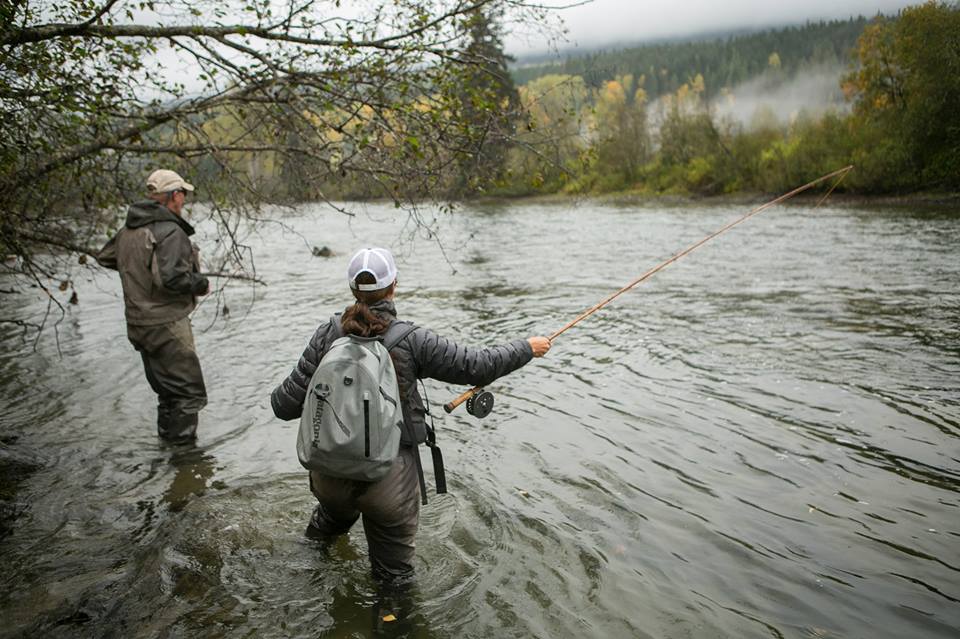
Cack Handed: A cast in which the D-Loop is formed on the side opposite one’s primary shoulder while maintaining a hand configuration that puts their strong hand up on the grip still. For example, if a right-handed angler performed a cast in which the D-Loop formed on the left shoulder while still gripping the rod with the right hand above the left hand he/she would be casting cack handed. Also referred to as “reverse” as in Reverse Snap-T.
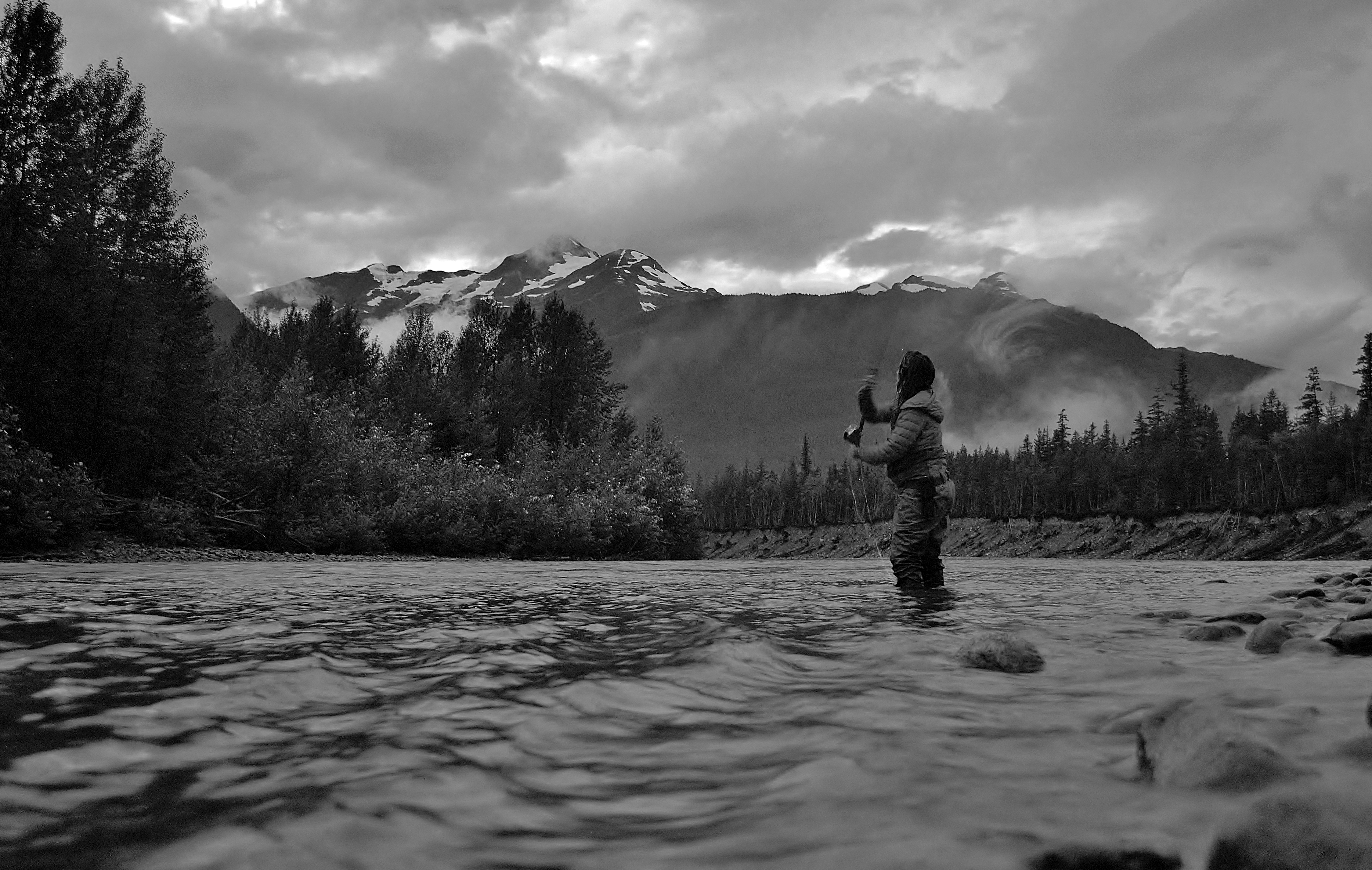
Carrying a Loop: An excess length of line that is loosely held between the cork and the reel while swinging a fly. The length is largely a function of personal preference and varies from several inches to a foot or more. The concept being that the loosely held length of line will be pulled taut when a steelhead takes, thus preventing an excited angler from yanking the fly away from an interested fish in an attempt to set the hook.
Clipped: A term used to indicate that the adipose fin of a fish has been removed meaning that the fish is of hatchery origin.
Chrome(r): A fresh steelhead that lacks the traditional rainbow trout coloration. As a steelhead spends more time in freshwater it takes on a darker hue. Steelhead anglers generally prefer catching bright steelhead as they are at the peak of physical condition having just entered freshwater from the ocean.
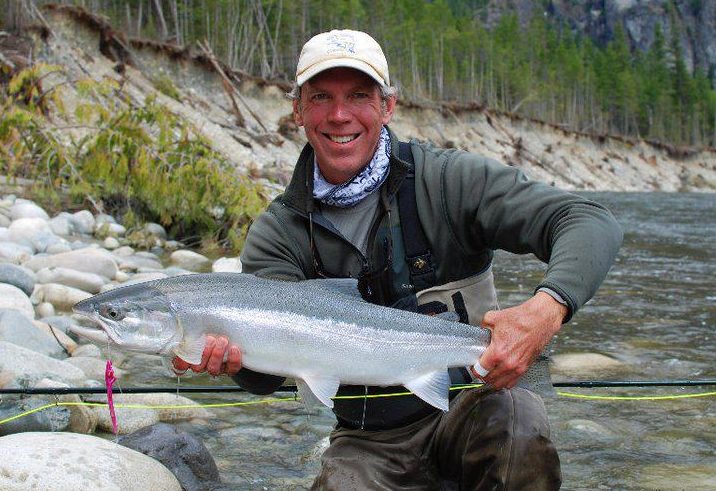
D-Loop: The D-Loop is the “backcast” in Spey casting. It is the semi-circular length of line that unfurls behind the angler prior to commencing the forward stroke. The name comes from the shape the line takes when viewed in profile.
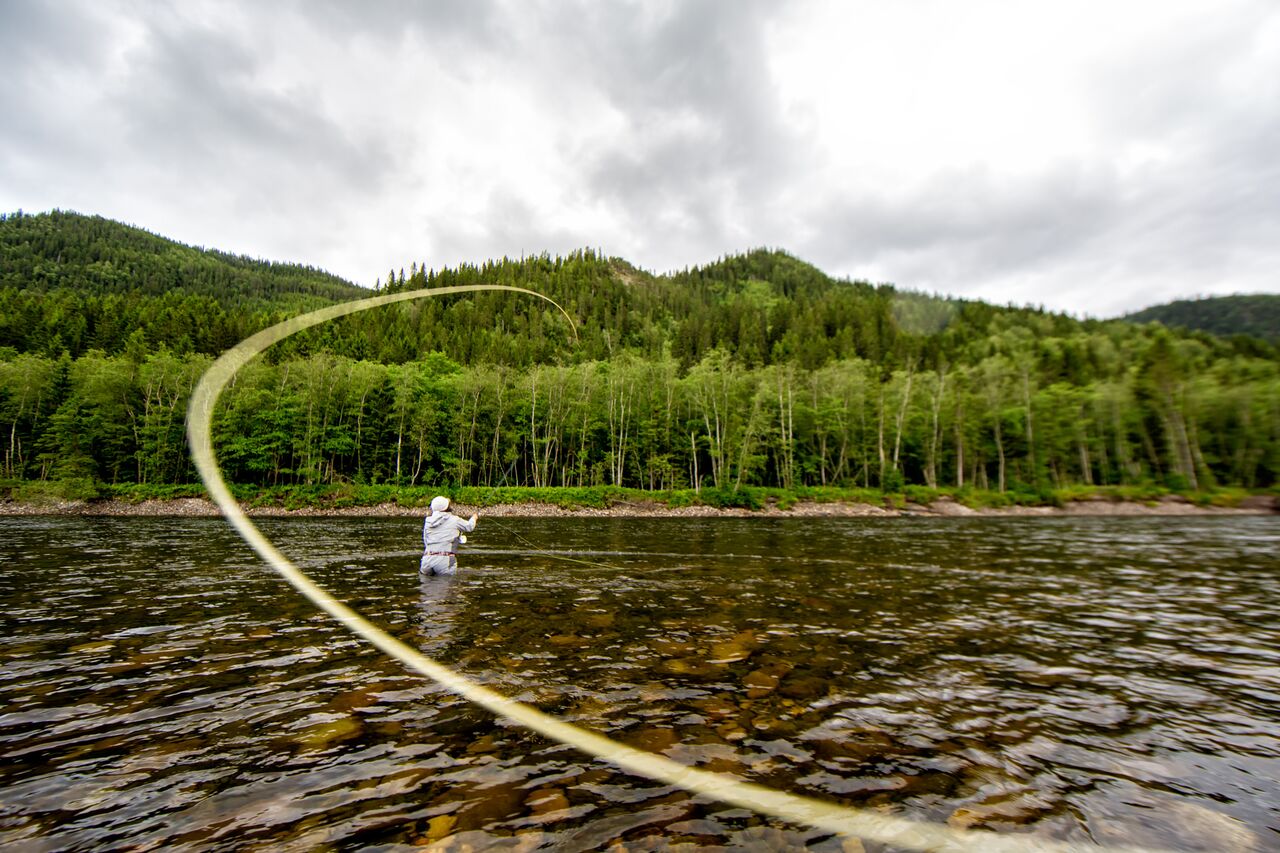
Dangle (or Hang Down): When an angler allows their fly to complete its swing but leaves it to hang parallel to the shore in either the current or the slower water for a few seconds. Fish often bite flies on the dangle or follow them from the main current and finally take the fly after the swing is completed. When the water is murky, it is quite common for fish to push in closer to shore to escape the heavier, sediment carrying main flow, making the dangle even more important in this scenario.
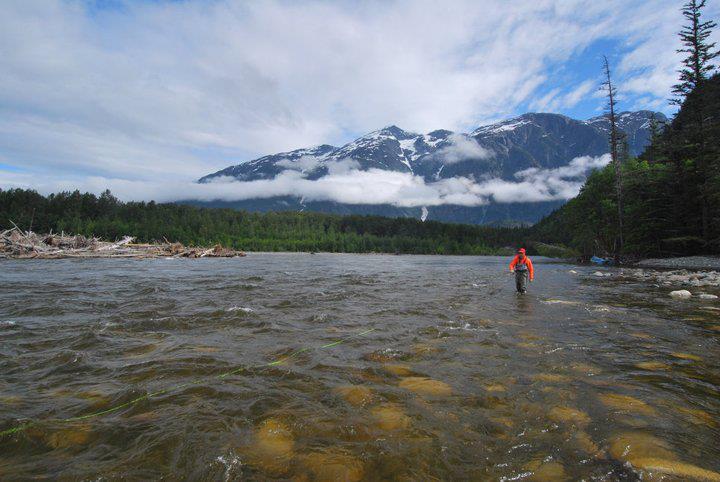
Grab/Pull/Pluck: An event in which a steelhead has intercepted a swung fly but typically has not been hooked. The phrase “any grabs?” is often used in river-side chats in substitution of the more direct “catch anything?”
Hen/Buck: Terms used to describe the gender of a steelhead. The most common method of discerning is by looking at the head of the fish. Bucks (males) have longer snouts and mandibles, whereas hens (females) have shorter snouts and mandibles.
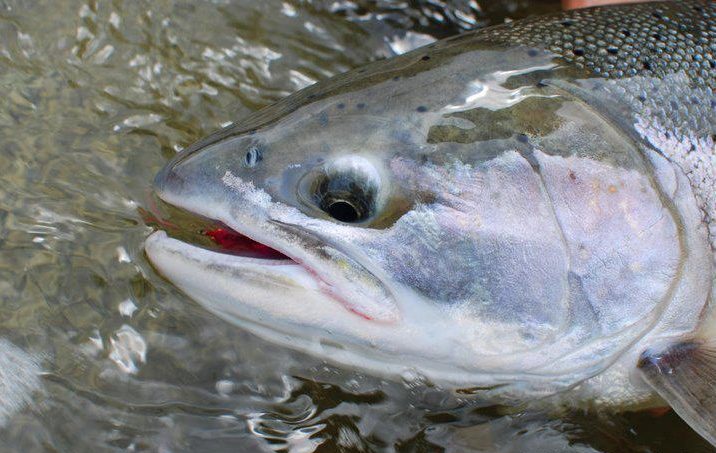
Kelt: A steelhead that has spawned and is migrating back downstream to the ocean. Kelts are typically encountered in the late-spring and early summer period. It is recommended that fishing for kelts is avoided.
Low-Hole: When an angler steps into a run and begins fishing below you without permission. Since steelhead anglers typically work their way downstream, proper etiquette dictates that anglers start in above anyone already fishing a run. Low-Holing is frowned upon virtually everywhere steelhead swim.
Overhang: The length of running line that is extending out the tip of the rod while casting. This is largely a personal preference and typically varies from almost nothing to a foot or more.
Pocket Picked: A scenario in which another angler hooks a steelhead in water you have just recently fished. Most commonly used in the context of swinging flies in a run with multiple anglers.
Running Line: A thinner, consistent diameter line attached behind the belly or head of a line. There are several types of running line available including monofilament, braided, and plastic coated fly line type.
Scandi: Short for Scandinavian. A shooting head typically in the 30 to 40 foot length range with a long front taper. While not particularly effective at casting large flies or sink tips, Scandi lines have gained popularity as an easy casting summer/fall steelhead spey line.
Skagit: A short and heavy shooting head used in spey casting that is usually 20 to 30 feet long. Developed in the Pacific Northwest for casting large, heavy steelhead flies with sinktips. Often used for winter steelhead fishing.
Steelhead Green: A term used to describe a river with a greenish water color that typically indicates ideal water conditions for encountering steelhead.
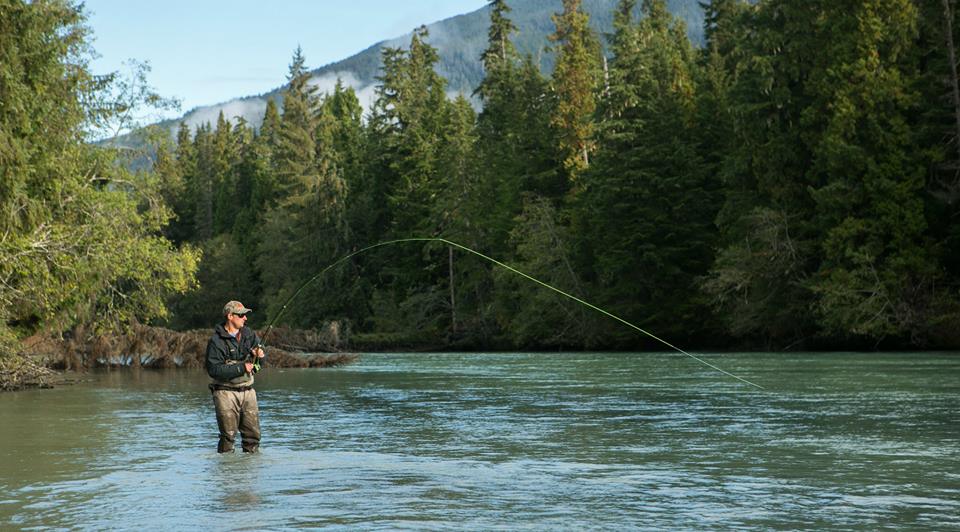
Stinger Hook: A hook added to the back of a fly. Stinger hooks are commonly seen on streamer patterns and on modern steelhead flies. They provide several advantages over more traditional “J-Hooks”, particularly on large flies. The positioning of the hook at the rear of the fly typically results in an increased percentage of hook-ups, allows the use of smaller hooks that are less damaging to fish, provides the ability to swap hooks when one becomes dull and lessens the leverage a fish is able to apply when sideways force is applied to the hook.
Swinging: Method of presenting a fly in which the fly is swept across the current in an arc while maintaining a taut line. This method typically has the ability to cover more water than that of a dead-drifted presentation.
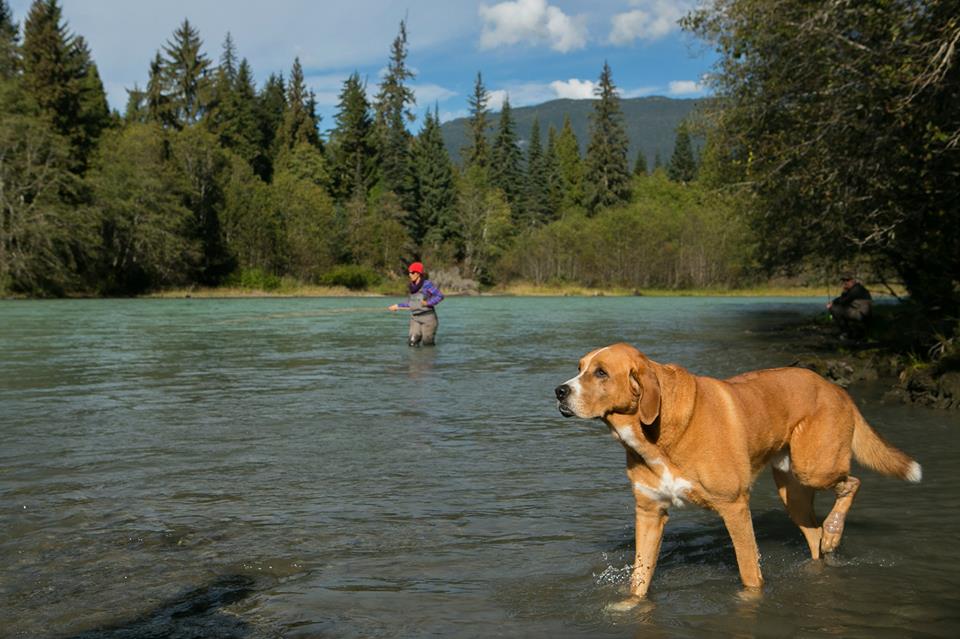
Tail: To grab a steelhead at the “wrist” just ahead of the tail in order to land it. Tailing a fish does not involve the use of a net.
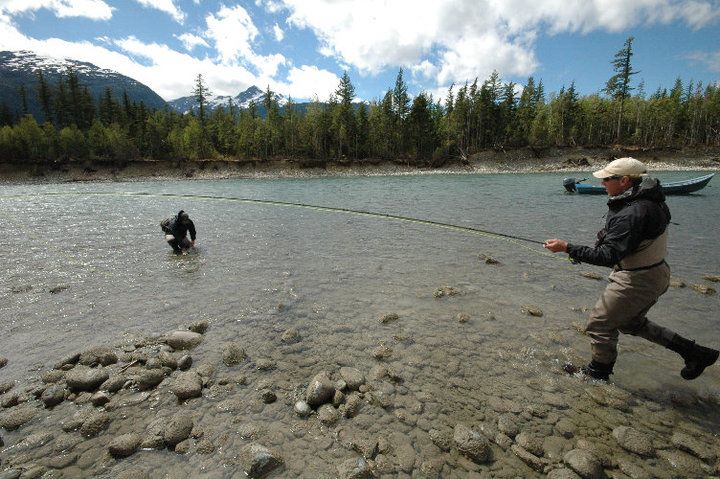
Tank: Usually a deeper, slower section of river. Often holds fish but is difficult to effectively present a swung fly in.
“Touch a fish”: To get a grab (or pull) from a steelhead. This does not mean to physically land or touch a fish.
White Mouse: The steady spray caused by the line being “torn” out of the water and swept into the D-Loop in a waterborne anchor cast such as a Double Spey.
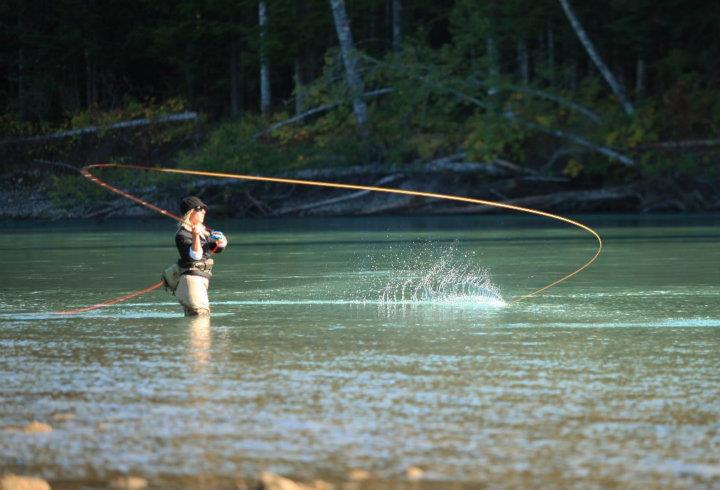
Sign In or Create a Free Account
Access the newest seasons of MeatEater, save content, and join in discussions with the Crew and others in the MeatEater community.



